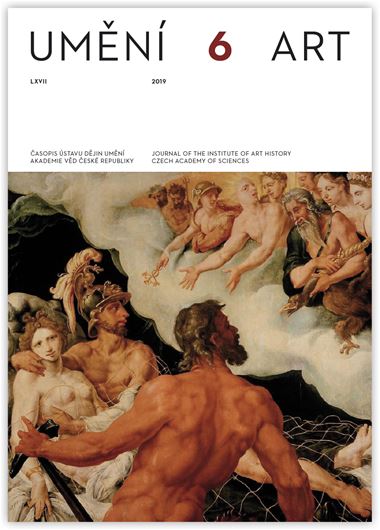Petr Uličný
The Summer Palace in the Royal Garden of Prague Castle and
the First Renaissance Recreational Building in Central Europe
Over just a few decades, starting in the last years of the 15th century, three summer palaces that were all very similar to one another were built in the Bohemian and Hungarian Lands. One stands close to Prague Castle, and since the 19th century has been known as the Belvedere, another on the edge of the former game reserve of Ovenec near Prague, and the third in the Nyék game reserve near Buda. They all had long rectangular cores surrounded by an arcaded walkway on the ground floor, and although they were among the first Renaissance buildings either in this region or the whole transalpine area, no direct model in this form can be found for them in Italy. This article aims to present a new analysis of the relationship between the three buildings, and one that leads to a new view of the genesis of the architecture of the Prague summer palace, which was built in the years 1538–1563 by Paolo della Stella, Giovanni de Spatio and Bonifaz Wohlmut. Paolo della Stella, who was sought out by King Ferdinand I in Genoa in 1537, and has until now been considered the architect of the palace, seems only to have been responsible for details of the building that were influenced by the contemporary work of Michele Sanmicheli and Jacopo Sansovino, while the overall plan with columned arcades encircling the building has its origin in the Central European architecture of Matthias Corvinus and Vladislav Jagiellon. Ferdinand gained a detailed first-hand knowledge of this architecture in 1527, and because apart from a brief visit to Trent in 1536 he was never in Italy, his experience in Hungary was his main opportunity to get to know Renaissance art, and of a very high standard. The other architectural inspiration for the Prague Belvedere was the summer palace in the Ovenec game park, which was built with the help of stonemasons from Buda around the year 1495, and appears to be older than what is known as Building II of the complex in Nyék, probably built around 1502. The ultimate source for the idea of encircling arcades was probably the Medici villa of Poggio a Caiano, built starting in 1495; its plan was brought to the Buda court of Vladislav Jagiellon by one of the Florentine masters.
Petr Uličný: petrulicny@seznam.cz
Full-text in the Digital Library of the Czech Academy of Sciences:
https://kramerius.lib.cas.cz/uuid/uuid:ffb769d6-9a08-445e-9a94-236419ddde29
< back

